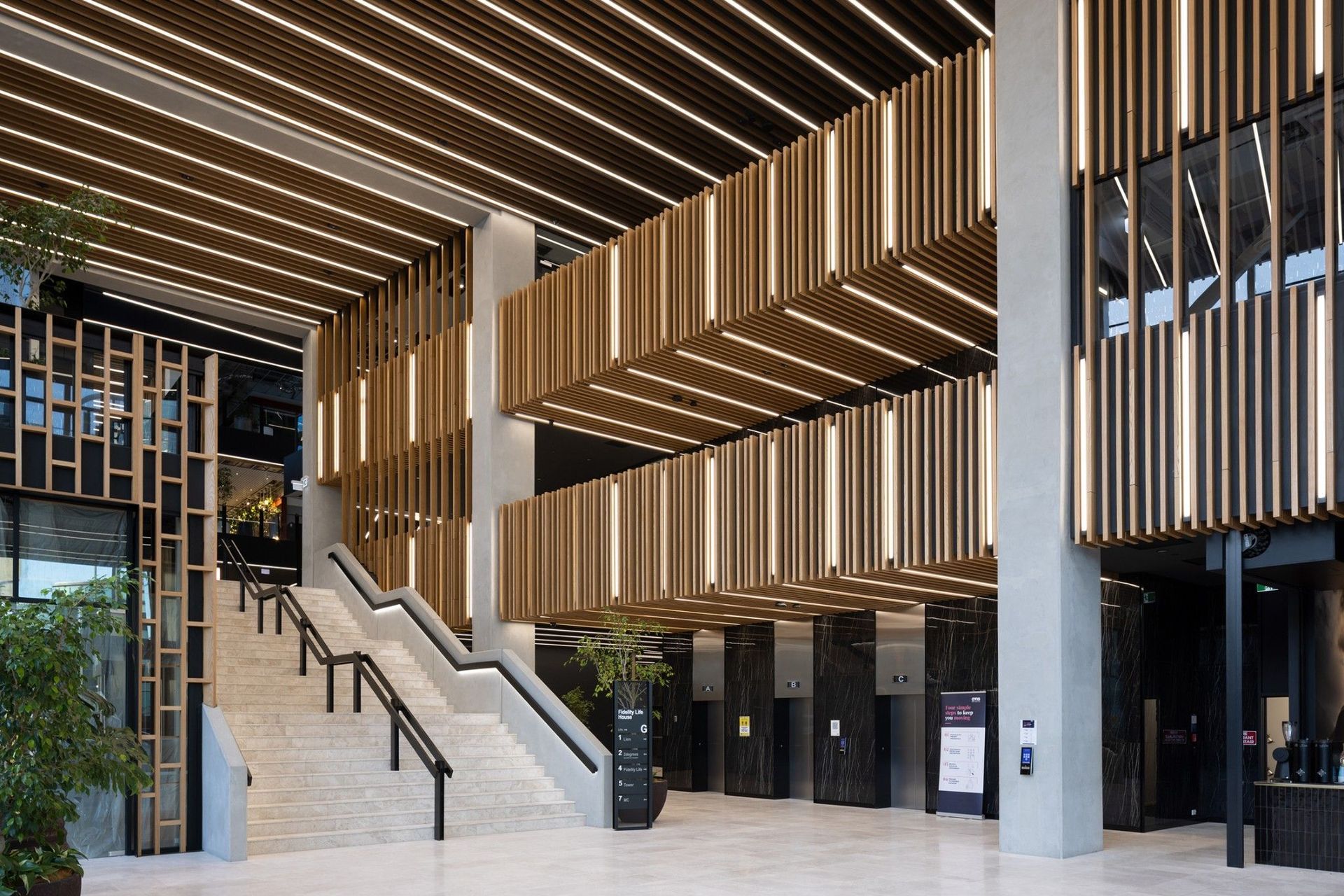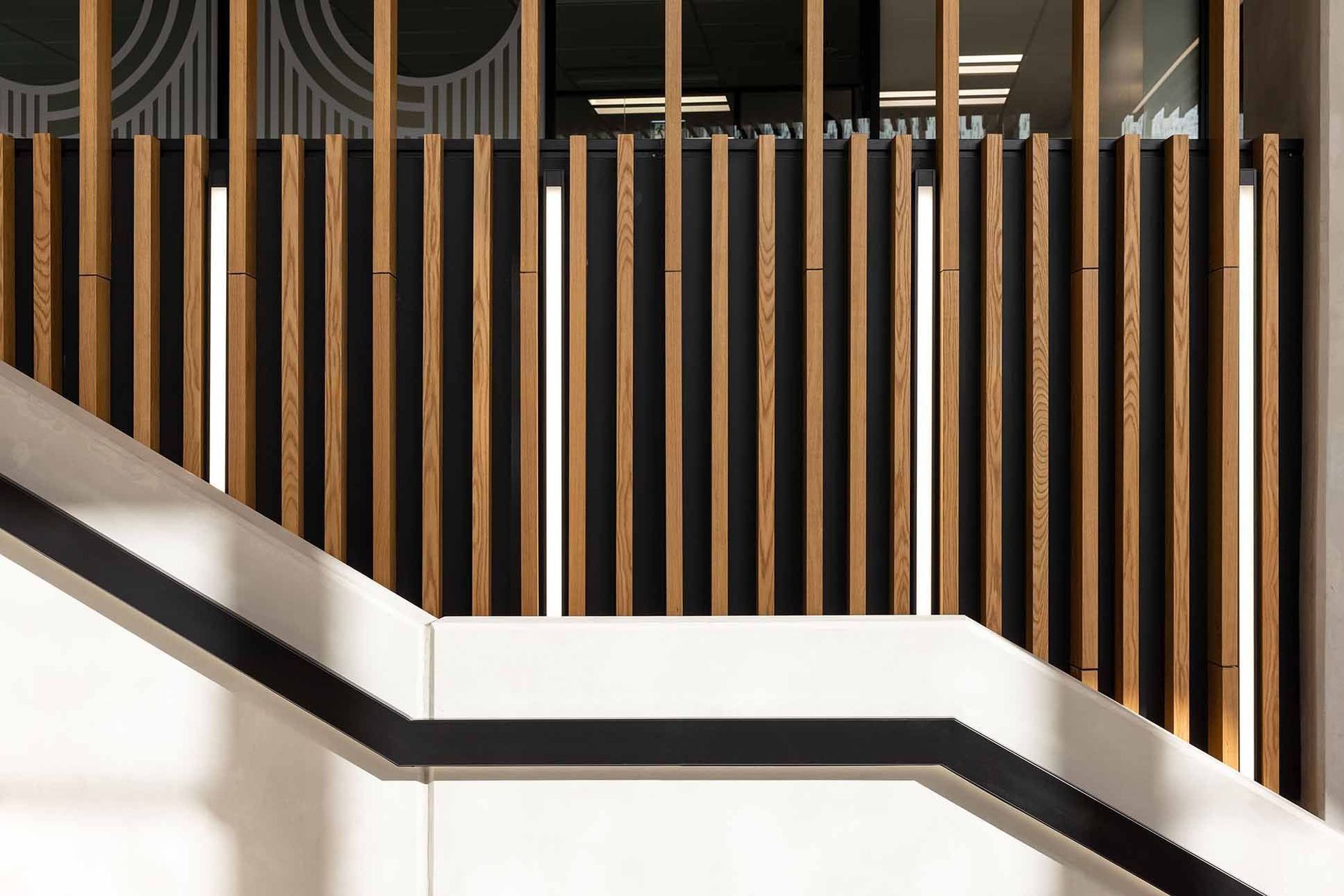World-leading Green Star building showcases sustainable aluminium screening
Written by
08 May 2024
•
3 min read

The design of a new commercial building acknowledges and celebrates the original shoreline of Auckland, and provides a key link between the upper city and the waterfront. Sited on the original boundary of Waitematā Harbour foreshore and cliff edge, spanning between Harding and Fanshawe Streets, FORMiS designed the Te Aukati buildings to accommodate several commercial tenancies, connecting them through a broad internal promenade.
The eight-level building and seven-level building are integrated via a large-scale central atrium staircase and interconnecting air bridges. Vulcan supplied aluminium screening products to highlight these key areas of transition and connection.
“Initially a timber product had been specified for the screening and there had been some product failures. The developer was looking for alternate products, and they’d had some success with UltraBatten in past developments they've done, so they reached out to see if we could do something in the same sort of vein,” says Vulcan’s James Wells.

The replacement product needed to be secure and long-lasting, and also look like real timber.
The product specified is called UltraBatten, which is an extruded aluminium profile, which is attached with concealed fixings. UltraBatten can be anodised or powder-coated into almost infinite colours.
“In this case it was powder coated and it has a sublimated woodgrain finish from Metwood so it looks a lot like wood.”
The sublimated pattern on the aluminium is varied, so that it doesn’t appear to have repeating patterns, making it far more realistic than some other products.
“We met with the architects a couple of weeks ago, and I think they'd been quite nervous that it could look like a fake woodgrain, but they were pleasantly surprised and were really happy with how it has come up.”

Because UltraBatten is aluminium it’s less prone to degradation over the long term and is also in line with the sustainability goals of the project.
“Aluminium is effectively infinitely recyclable, so it lends itself to circular economies in terms of the product being reused repeatedly,” says Wells. “Timber products sequester carbon, but obviously, in the full lifecycle it's going to release that carbon. Whereas, the more we use aluminium products in the building industry, we begin seeding a circular economy.”
Vulcan’s aluminium products are sourced from Tiwai Point in Invercargill, which uses green energy.
“It has a very low embodied carbon content because it's refined using renewable energy,” says Wells.
The developer is incredibly happy with the end product, not least because it solved a tricky product failure, but it was also a cost-effective solution.
“They're so pleased with the result that they’re doing some larger developments at the moment where they've chosen to use Ultrabatten again, this time a mixture of anodised silver and black powder coat - we are excited to see the end result.”
Explore projects using aluminium screening by Vulcan